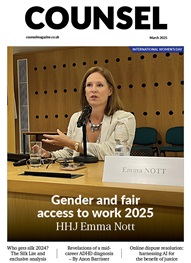*/
Sir Brian Neill, Richard Rampton QC, Heather Rogers QC,
Timothy Atkinson, Aidan Eardley
LexisNexis, 3rd edition (Aug 2009), £195.00, ISBN 978-0406178312
Since the first edition of Duncan and Neill in 1978 the libel landscape has changed dramatically and looks set to continue doing so. Juries are no longer “in the position of sheep loosed on an unfenced common, with no shepherd” as Lord Bingham famously described them. More detailed directions are now commonplace and jury awards correspondingly smaller than in their zenith in the 1980’s; to the considerable relief of the popular press.
In Reynolds v Times Newspapers [2001] AC 127 the House of Lords created a new immunity for the media where what was published was false but where the story was in the public interest and was the product of responsible journalism. Initially the media struggled to establish this defence, but in Jameel v Wall Street Journal Europe Sprl [2006] UKHL 44, Lord Hoffmann in particular gave the defence a considerable boost. It is a curious phenomenon that at a time when, in general, journalistic standards are regarded as at an all time low, the law is moving towards granting the media more immunities rather than seeking to enforce professional standards.
The authors’ approach to the Reynolds defence is not to dwell on the decision itself, but to take as their starting point the re-statement of the law in Jameel. This works extremely well. As with previous editions the authors are aiming for an “impeccable synthesis” of the law rather than the more detailed treatment given to the subject in the other leading textbook.
It is an essential textbook and its measured and concise style is likely to commend itself to judicial citation in difficult cases.
Keith Schilling, Schillings Solicitors. A longer version of this review was published in NLJ (5 March 2010).
In Reynolds v Times Newspapers [2001] AC 127 the House of Lords created a new immunity for the media where what was published was false but where the story was in the public interest and was the product of responsible journalism. Initially the media struggled to establish this defence, but in Jameel v Wall Street Journal Europe Sprl [2006] UKHL 44, Lord Hoffmann in particular gave the defence a considerable boost. It is a curious phenomenon that at a time when, in general, journalistic standards are regarded as at an all time low, the law is moving towards granting the media more immunities rather than seeking to enforce professional standards.
The authors’ approach to the Reynolds defence is not to dwell on the decision itself, but to take as their starting point the re-statement of the law in Jameel. This works extremely well. As with previous editions the authors are aiming for an “impeccable synthesis” of the law rather than the more detailed treatment given to the subject in the other leading textbook.
It is an essential textbook and its measured and concise style is likely to commend itself to judicial citation in difficult cases.
Keith Schilling, Schillings Solicitors. A longer version of this review was published in NLJ (5 March 2010).
Sir Brian Neill, Richard Rampton QC, Heather Rogers QC,
Timothy Atkinson, Aidan Eardley
LexisNexis, 3rd edition (Aug 2009), £195.00, ISBN 978-0406178312
Since the first edition of Duncan and Neill in 1978 the libel landscape has changed dramatically and looks set to continue doing so. Juries are no longer “in the position of sheep loosed on an unfenced common, with no shepherd” as Lord Bingham famously described them. More detailed directions are now commonplace and jury awards correspondingly smaller than in their zenith in the 1980’s; to the considerable relief of the popular press.


Efforts continue on gender equality, support for the Bar, meaningful reform for the sector and advocating for the rule of law
To mark International Women’s Day, Louise Crush of Westgate Wealth Management looks at how financial planning can help bridge the gap
Casey Randall of AlphaBiolabs answers some of the most common questions regarding relationship DNA testing for court
Leading drug, alcohol and DNA testing laboratory AlphaBiolabs has made a £500 donation to Beatson Cancer Charity in Glasgow as part of its Giving Back campaign
Girls Human Rights Festival 2025: a global gathering for change
Exclusive Q&A with Henry Dannell
Marking Neurodiversity Week 2025, an anonymous barrister shares the revelations and emotions from a mid-career diagnosis with a view to encouraging others to find out more
Patrick Green KC talks about the landmark Post Office Group litigation and his driving principles for life and practice. Interview by Anthony Inglese CB
Desiree Artesi meets Malcolm Bishop KC, the Lord Chief Justice of Tonga, who talks about his new role in the South Pacific and reflects on his career
Sir Nicholas Mostyn, former High Court judge, on starting a hit podcast with fellow ‘Parkies’ after the shock of his diagnosis
Once you submit your silk application, what happens next? Sir Paul Morgan explains each stage of the process and reflects on his experience as a member of the KC Selection Panel